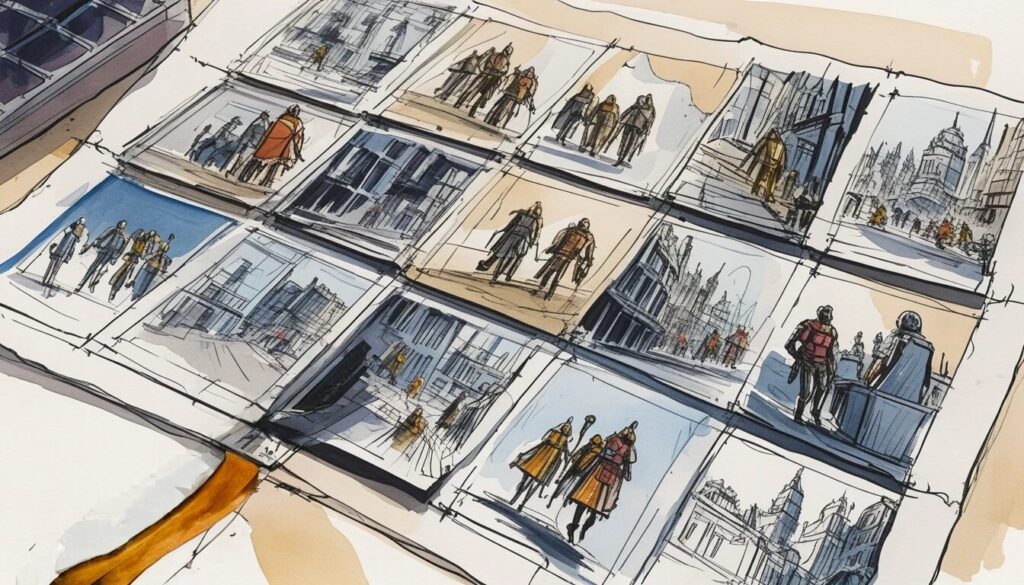Why Illustration Styles Matter More Than You Think
Imagine flipping through a children’s book only to find cold, corporate-looking icons instead of whimsical, hand-drawn characters. Tragic, right? Illustration styles for storytelling aren’t just an aesthetic afterthought—they’re the secret ingredient that makes narratives leap off the page, screen, or billboard.
The importance of illustration in design goes beyond decoration. It serves as a bridge between content and audience, shaping emotions, comprehension, and engagement. Effective illustration for audience engagement can transform dull information into a compelling visual journey. Whether it’s a brand looking to establish an identity or a UX designer crafting seamless user interfaces, the right visual storytelling techniques make all the difference.
How Different Illustration Styles Influence Storytelling
- Visual tone: The artistic approach determines the mood and emotional response.
- Audience connection: Different demographics resonate with distinct styles.
- Brand consistency: Illustrations should align with a brand’s message and persona.
- Impact on comprehension: Complex ideas become digestible through the right visuals.
Illustration styles for storytelling dictate the way messages are perceived. A gritty ink sketch might evoke nostalgia and raw emotion, while a sleek vector graphic exudes modernity and professionalism. The goal? To create a visual language that not only complements the narrative but actively enhances it.
For example, a brand like Airbnb uses friendly, hand-drawn illustrations to cultivate a welcoming, human-centric feel. In contrast, tech companies often gravitate toward crisp, geometric designs to reflect efficiency and innovation.
Choosing the Right Illustration Style for Maximum Impact
- Know your audience: Age, interests, and cultural background influence engagement.
- Consider the platform: Digital interfaces require scalable, responsive visuals.
- Match the message: Playful stories need expressive artwork; data-heavy content benefits from clarity.
- Stay consistent: Mismatched styles create confusion and weaken brand identity.
Picture a financial institution using comic-style illustrations. Confusing, right? Selecting the right type of illustration in UX design or branding ensures coherence and trustworthiness. Children’s books thrive on colorful, exaggerated characters, while corporate reports often employ clean, minimalistic visuals to enhance readability.
Digital platforms also play a role. Mobile applications, for instance, rely on vector-based illustrations for adaptability and clarity, whereas print media might lean toward textured or hand-drawn elements to evoke nostalgia and authenticity.
Popular Illustration Styles and Their Storytelling Superpowers
- Watercolor: Soft, emotional, and timeless—perfect for heartfelt storytelling.
- Cartoon and caricature: Playful exaggeration makes content fun and engaging.
- Surreal photomontage: A dreamlike fusion of reality and fantasy.
- Flat vector: Crisp, scalable, and highly effective for UI/UX.
- Hand-drawn sketch: Adds authenticity and a personal touch.
Watercolor illustrations, with their organic textures and fluidity, evoke warmth and nostalgia, making them a favorite for children’s books and sentimental branding. Meanwhile, cartoon and caricature styles inject humor and relatability—think of Red Bull’s animated ads, which use exaggerated characters to entertain and inform.
Surreal photomontages fuel conceptual storytelling, merging abstract visuals with realism to create thought-provoking imagery. On the other end of the spectrum, flat vector illustrations dominate digital spaces due to their clarity and scalability—ideal for UX and branding. Lastly, hand-drawn sketches bring authenticity and a raw, artistic feel, making them a staple in independent publishing and boutique branding.
Illustration in UX Design: More Than Just Pretty Pictures
- Improves navigation: Icons and pictograms guide users effortlessly.
- Enhances engagement: Interactive illustrations create immersive experiences.
- Strengthens branding: Unique visuals make interfaces memorable.
- Boosts accessibility: Visual elements aid users with different cognitive abilities.
The types of illustration in UX design are far from decorative fluff. They serve as functional elements that improve user experience by enhancing clarity and engagement. Ever noticed how apps like Duolingo use friendly, animated characters to guide language learners? It’s an intentional strategy to keep users motivated.
Icons and pictograms simplify navigation, helping users interact with digital platforms intuitively. Meanwhile, interactive illustrations—such as animated onboarding sequences—boost engagement by making processes feel dynamic rather than tedious.
Illustration Styles and Their Influence on Different Audiences
- Children: Bright, exaggerated visuals capture their imagination.
- Teens: Edgy, pop-culture-driven designs resonate with their evolving identity.
- Adults: Sophisticated, well-balanced visuals enhance comprehension.
- Corporate users: Clean, polished graphics establish professionalism.
Illustration styles for storytelling must align with audience expectations. For children, lively colors and exaggerated expressions create immediate appeal—look no further than Nintendo’s vibrant game art. Teen-focused designs, on the other hand, thrive on trends, bold lines, and street art influences to maintain relevance.
Adults appreciate nuanced, well-crafted illustrations that communicate ideas effectively, while corporate audiences favor sleek, professional graphics that convey trust and authority. A mismatched illustration style can alienate an audience rather than engage them.
The Future of Illustration in Design and Storytelling
- AI-generated art: Blending automation with human creativity.
- Augmented reality: Interactive illustrations pushing engagement further.
- Hyper-realistic digital painting: Blurring the line between photography and illustration.
- Minimalist storytelling: Stripping visuals down to their essence for maximum impact.
Illustration is evolving at lightning speed. AI-generated artwork is opening new creative possibilities, while augmented reality is turning static illustrations into immersive experiences. And let’s not forget the rise of hyper-realistic digital painting, which challenges our perception of what’s real versus illustrated.
At the same time, minimalist storytelling is proving that sometimes, less is indeed more. By stripping away unnecessary details, designers can focus on delivering clear, impactful messages with fewer distractions.
Final Thoughts
Illustration is more than a visual accessory—it’s the backbone of effective storytelling. Whether it’s guiding users through an app, reinforcing a brand’s identity, or shaping a book’s emotional tone, the right style makes all the difference.
So, before you settle for generic stock images, ask yourself: does this truly tell your story? If not, it might be time to embrace the power of illustration and craft visuals that don’t just complement your message but amplify it.
